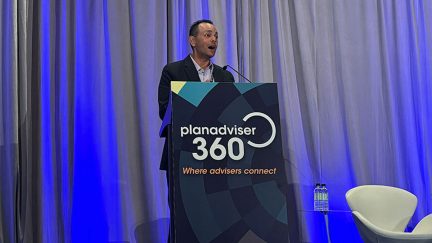Want the latest retirement plan adviser news and insights? Sign up for PLANADVISER newsletters.
California Lawmaker Pushes for State DC Plan Option
A new bill in the California legislature would offer new state employees a 401(k)-style plan in which their own contributions would be fully matched by the state.
California State Senator Steve Glazer, who serves the state’s 7th senate district, introduced a bill earlier this month to allow new state employees the option of opting out of pension plan benefits and instead choose a “self-directed and portable retirement plan.”
Glazer’s bill, dubbed “SB 1149,” would, he says, provide for matching contributions “at the same level the state now contributes to the California Public Employees Retirement System defined benefit plan.”
As Glazer puts it, “the big difference in our approach is that workers who leave state employment would be able to take with them the entire balance in their retirement plan—including both the employee and employer contributions and investment gains. They could then invest that money with their new employer or on their own.”
Under current law, employees who leave state service before retirement can receive refunds of their own contributions, plus interest.
“This pension reform idea would be good for employees and provide a more stable fiscal foundation for the state,” Glazer says. “This new retirement plan would be especially attractive to Millennials who do not intend to work for the state their entire lives. The change could also make the state’s pension obligations more predictable because the state would no longer be at risk of an unfunded liability for employees who choose the new option. Currently, the unfunded liability for CalPERS is estimated at about $140 billion. This is the projected cost of pensions that the state has promised employees but not fully funded. The system only has about 68% of the money needed to fulfill all of its obligations.”
It should be stated that many advocates and lobbyists disagree with the assessment that moving away from defined benefit plans is helpful for a state’s or municipality’s taxpayers and economy. For example, the National Institute on Retirement Security (NIRS) recently studied the case of Palm Beach, Florida, which it says offers “an important cautionary tale on the detrimental impacts of switching public employees from DB pensions to DC accounts.” That research argues in stark terms that the peripheral impacts of ceasing to offer a pension program for state employees are quite dramatic and unpredictable—completely outstripping any savings realized by the pension plan.
Glazer rejects that assessment and instead emphasizes the simple fact that most employees do not spend their entire career in state employment. Glazer argues younger employees who work as long as 15 years for the state would still likely be better off with their own retirement plan than they would be if they left their money with the traditional pension plan and claimed a pension at their full retirement age.
Under Glazer’s plan, the state Human Resources Department would administer and oversee the defined contribution-type program—and they would take explicit steps to help employees address investment risk and make appropriate investment decisions for different stages in their working career.
“The state already manages a similar program for employees who invest their own money in the Savings Plus plan,” Glazer notes.
Read more about the proposal here.
You Might Also Like:

Weak Market Returns Sink Corporate Funding Ratios

How to Establish Better Decumulation Options for Future DC Plans




